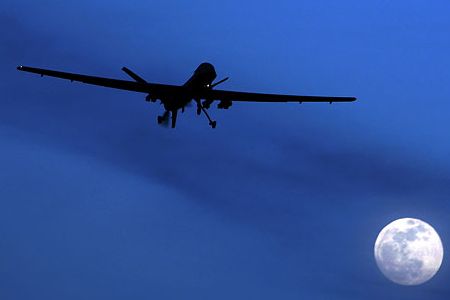
The failure of an on board electrical generator caused the crash of a drone in February during a mission over Africa, an Air Force investigation announced Wednesday.
The Air Force crew in charge of the aircraft intentionally crashed the MQ-9A Reaper over international waters after they were unable to fix the problem Feb. 4, according to the report by the Accident Investigation Board.
The $13.2 million aircraft was destroyed and the wreckage was not recovered, the service said.
The Reaper was assigned to the 33rd Expeditionary Special Operations Squadron, 435th Air Expeditionary Wing in Africa Command. It was flying an intelligence, surveillance and reconnaissance mission when the problem occurred, according to Air Combat Command.
The Air Force has not disclosed where the drone was operating, and the accident report withheld the name of the installation the aircraft launched from.
Officials also did not indicate the drone’s mission, though AFRICOM leaders have been trying to increase surveillance of African extremist groups such as Boko Haram and other terrorist threats.
The crash report comes as the Pentagon is trying to ramp up the number of drone missions. On Monday, military leaders said they plan to expand drone sorties beyond the Air Force. In addition to the 60 air combat patrols the Air Force performs daily, the military hopes by 2019 to have between 10 and 20 daily drone flights conducted by the Army, 10 by U.S. Special Operations Command, and 10 by contractors.
The Reaper that crashed in February had been inspected just two days before the mission and was cleared for operation, the accident report said.
The drone took off without incident, but three hours into its flight, its starter-generator — which supplies most of the power to the drone — failed, the report said.
The piloting crew turned the aircraft around and directed it back toward the unspecified base, while shutting down noncritical systems in an effort to conserve power, the record shows.
However, while still 30 miles from the base, the pilot detected that the craft had only 24 volts of power left and was still losing energy.
“When battery voltage drops below 22V, the aircraft can become unstable and unreliable during flight,” the accident report said.
Lowering the aircraft’s landing gear would have used up additional power as well, investigators said.
Unable to guarantee control of the drone, military commanders directed the pilot to fly the Reaper out over international waters and crash it. However the aircraft didn’t have enough power left to even complete that, the report said. While descending, the drone’s power gave out completely, and the craft free-fell the rest of the way into the water.
Air Force officials said that “another ISR asset” observed the incident and confirmed that the drone impacted the water and was destroyed.
The drone operators were well rested and had been properly trained, the report said, adding that investigators did not believe that human error was a factor in the crash. The weather was also considered to be clear and is not believed to have been a factor in the crash.
Other than the aircraft itself, there was no damage involved in the incident, and no injuries.